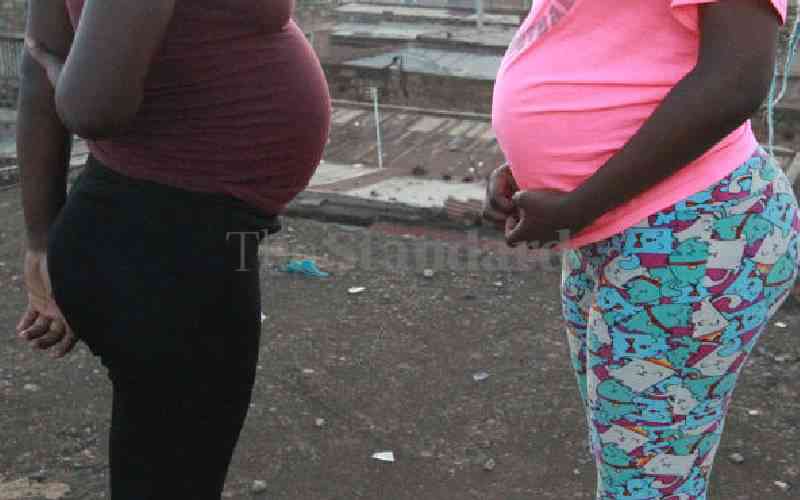 |
|
The dormitory was cluttered with broken beds. |
By BEATRICE WAMUYU
It was on the night of July 13 and 14, 1991 that one of the most despicable incidents of violence by teenagers happened.
Tucked away in Tigania, Meru, St Kizito Secondary School rarely made any news. But what happened that night would shock the nation as it sought answers into what could have caused young boys to kill and rape their female classmates.
It was a normal day at the mixed school. In the evening, students quietly sat in the classroom for studies. At 8.30pm, a power outage blanketed the school in darkness, forcing students to retreat to their dormitories.
The girls were first to go to their sleeping quarters, as was the tradition whenever power supply was interrupted. Unknown to them, the boys had short-circuited the electricity supply in a ploy to have them leave the classrooms early.
At around 10pm, heavy stones started raining on the girls’ dormitories. Terrified, they ran to hide in their largest dormitory, Mbatian, as previously instructed by the head girl. It was thought to be the safest as it had strong doors and steel grills.
The dormitory usually accommodated 70 beds but now it had to contain four times the number. Some 271 girls were squashed into it, hardly able to breathe. They closed all the windows and doors and lay still, hoping to walk out safely in the morning.
Then, suddenly, the commotion outside came to a stop.
A teacher who had heard the noise and screams from the girls had gone to check what was happening.
He instructed the boys to return to their dormitories, which they did. Satisfied that the boys obeyed his orders the teacher left for his house.
It was late in the night at around 1.00am when the horrified girls had begun to regain some calm that heavy stones rained again. The boys had returned.
Like ghouls in the night, they broke down the doors as the girls cowered and pleaded. Inside the dorm, the girls squeezed themselves in the corner of the room, crying their lungs out.
“It was like hell had broken loose in the stuffy, dark room,” one girl recalled later.
They had powerful torches that helped them identify their victims, who they suspected of having relationships with some school officials. They mercilessly attacked the girls raping them over and over again. Others were seriously injured as beds fell on them. In the ensuing melee, others were trampled to death. The boys then fled.
The aftermath was chilling. A total of 19 girls lay dead, and 71 were injured. Many were raped. Four of the girls suffocated to death.
Stay informed. Subscribe to our newsletter
In the morning the dormitory was in a shambles: overturned furniture, brokenbeds, torn clothes. It was littered with shoes whose wearers were no more.
The massacre had an even more profound effect on the survivors. Left to nurse the effects of trauma, they had difficulty living a normal life again.
“All this has made me bitter. This has shattered me,” said a student, who could not be named for legal reasons. “I’m completely shattered. No amount of sympathy will wipe out the ordeal.”
Charged in court
Petrified, the nation asked: How did this happen? What is wrong with the youth?
The incident also brought to the fore the preparedness of schools, and the police, to deal with student indiscipline. In what was a common occurrence, and still is, a police station informed of the slaughter could not respond because its vehicles lacked fuel.
“They said they had no petrol and couldn`t come,” said Massimo Ballottino, administrator of the Tigania Hospital, located about 500 yards from the school gate.
Three watchmen were charged in court for failing to stop the boys. They were later released for lack of evidence.
As investigations began, it was claimed that the boys were angry with the girls for refusing to join them in a strike against the headmaster, James Laiboni. Some students had previously been thrown out of a sports meet for not paying activity fees.
The school administration did not help by claiming the compound was haunted. “Local legend held that people disappear ed mysteriously on the dormitory grounds,” said Laiboni. Most of the more than ten boys later charged in court escaped with light sentences as rape and murder could not be proved.
 The Standard Group Plc is a
multi-media organization with investments in media platforms spanning newspaper
print operations, television, radio broadcasting, digital and online services. The
Standard Group is recognized as a leading multi-media house in Kenya with a key
influence in matters of national and international interest.
The Standard Group Plc is a
multi-media organization with investments in media platforms spanning newspaper
print operations, television, radio broadcasting, digital and online services. The
Standard Group is recognized as a leading multi-media house in Kenya with a key
influence in matters of national and international interest.
 The Standard Group Plc is a
multi-media organization with investments in media platforms spanning newspaper
print operations, television, radio broadcasting, digital and online services. The
Standard Group is recognized as a leading multi-media house in Kenya with a key
influence in matters of national and international interest.
The Standard Group Plc is a
multi-media organization with investments in media platforms spanning newspaper
print operations, television, radio broadcasting, digital and online services. The
Standard Group is recognized as a leading multi-media house in Kenya with a key
influence in matters of national and international interest.










